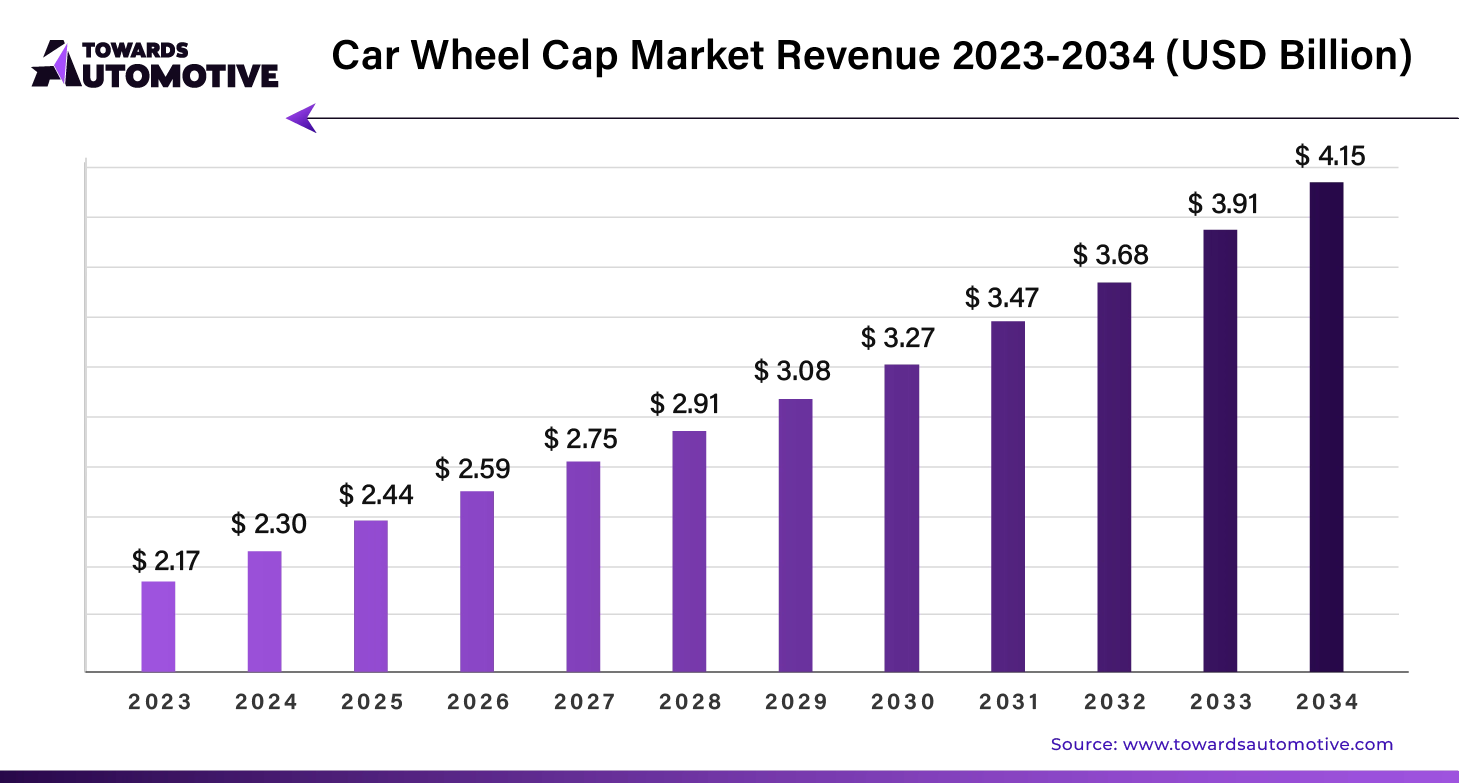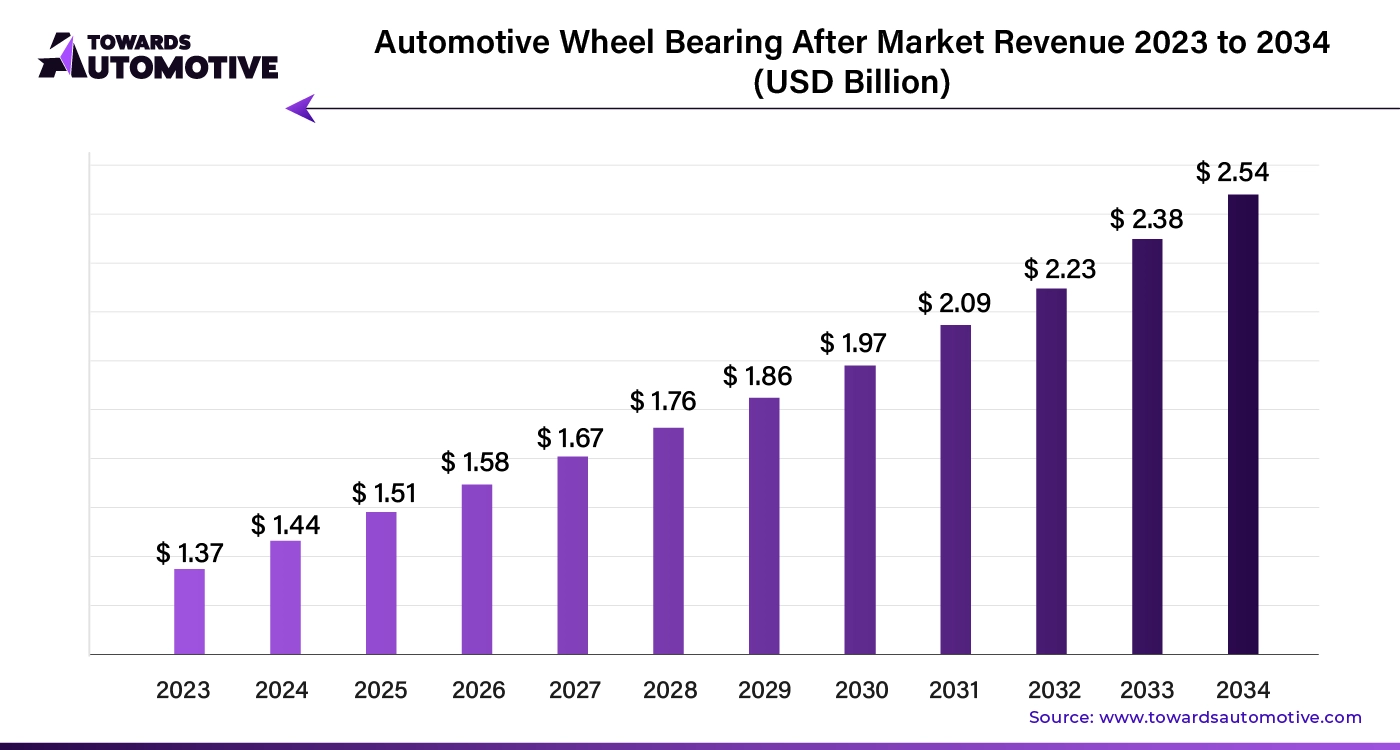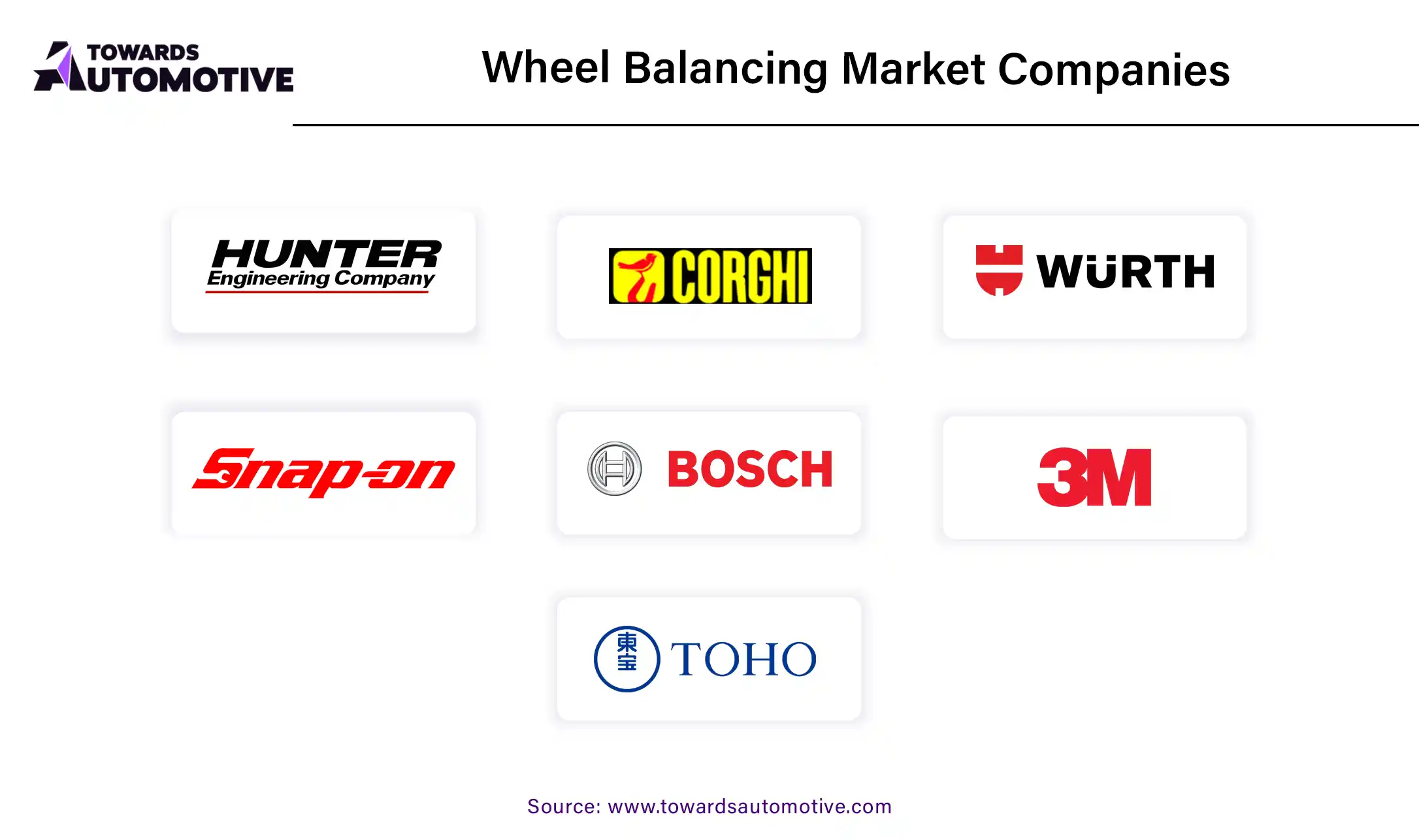October 2025
The global wheel balancing market is projected to reach USD 8.72 billion by 2034, growing from USD 3.59 billion in 2025, at a CAGR of 10.35% during the forecast period from 2025 to 2034.

The wheel balancing market plays a crucial role in the automotive industry, ensuring the safety, performance, and longevity of vehicles by maintaining the proper balance of wheels. Wheel balancing involves adjusting the distribution of weight on a vehicle’s wheels to ensure they rotate smoothly and evenly, minimizing vibrations, reducing tire wear, and improving fuel efficiency. As the global automotive industry continues to grow, the demand for wheel balancing services and equipment is increasing due to the rising number of vehicles on the road and the need for regular maintenance to enhance vehicle performance.
Additionally, advancements in technology have led to the development of more sophisticated wheel balancing machines that offer higher precision and efficiency. The growing awareness about the importance of tire maintenance, coupled with the rising adoption of electric vehicles (EVs) and the expanding aftermarket sector, has further fueled the market. Furthermore, as vehicles become more complex with advanced safety systems and smart technologies, proper wheel balancing is becoming even more critical to ensure optimal functioning and the overall performance of the vehicle. With increasing vehicle sales, especially in emerging economies, along with the growing need for tire and vehicle maintenance, the wheel balancing market is poised for significant growth in the coming years. Additionally, innovations in balancing technology are expected to drive the market forward, offering greater opportunities for service providers and equipment manufacturers.
AI plays an increasingly important role in the wheel balancing market by enhancing the accuracy, efficiency, and automation of wheel balancing processes. Traditional wheel balancing methods, although effective, require manual adjustments and calibration, which can lead to human error or inefficiency. However, with AI-powered wheel balancing machines, the process becomes more precise and faster, optimizing tire life and overall vehicle performance
AI algorithms can analyze wheel alignment and balance in real-time, automatically adjusting the balance settings to ensure smoother vehicle operation. Machine learning also allows these systems to learn from past data, predicting potential issues and offering proactive maintenance solutions, which helps reduce downtime and costly repairs. Furthermore, AI-driven systems can detect even minute imbalances or defects in the wheel and tire assembly that may not be easily identified by human operators, ensuring a higher level of accuracy.
Moreover, AI enables remote diagnostics, which allows technicians to monitor the wheel balancing process and identify problems remotely. This improves service efficiency, especially in high-volume settings like tire shops or service centers. AI also facilitates predictive maintenance, helping businesses to schedule servicing before problems arise, ultimately reducing maintenance costs and improving customer satisfaction.
As AI continues to evolve, its integration into the wheel balancing market is expected to become more widespread, further optimizing the balance process, improving vehicle safety, and enhancing the overall driving experience.
The growing sales of passenger cars significantly drive the growth of the wheel balancing market. As the global automotive industry continues to expand, particularly in regions such as North America, Asia Pacific, and Europe, the demand for passenger vehicles has surged. With increased vehicle ownership, the need for regular maintenance and servicing, including wheel balancing, becomes essential. Proper wheel balancing ensures the smooth operation of vehicles, reduces tire wear, and improves fuel efficiency, all of which are key concerns for car owners.
Additionally, passenger cars are increasingly equipped with advanced safety features, making wheel balancing crucial to maintain vehicle stability and performance. As the number of vehicles on the road rises, so does the demand for wheel balancing services, particularly in the aftermarket sector, which has seen significant growth. This trend is further amplified by rising consumer awareness about the importance of vehicle safety and performance. With more vehicles requiring regular maintenance, workshops and service centers offering wheel balancing solutions are expanding, thus contributing to the market's growth. Furthermore, the increasing adoption of high-performance vehicles and the growing preference for comfort and ride quality among consumers have made wheel balancing a routine part of vehicle upkeep. As a result, the growing sales of passenger cars directly fuel the demand for wheel balancing solutions, making it a key growth driver in the market.
The wheel balancing market faces restraints such as high initial costs of advanced equipment, which can be a barrier for small businesses. Additionally, a shortage of skilled technicians to operate sophisticated machines limits market expansion. Competition from alternative, less expensive manual balancing tools and DIY maintenance also hinders growth. Economic downturns and reduced consumer spending can further impact the demand for professional wheel balancing services, as vehicle owners may delay maintenance or seek more affordable options.
The rapid adoption of mobile wheel balancing machines is creating significant opportunities in the wheel balancing market, as these portable solutions offer flexibility, convenience, and cost-efficiency for both automotive service providers and end customers. Mobile wheel balancing machines are designed to be compact, lightweight, and easy to transport, enabling service providers to offer on-site wheel balancing services at a variety of locations, including remote areas or locations with limited infrastructure. This increased mobility not only reduces the need for customers to visit a physical service center but it also allows businesses to reach a wider customer base.
The demand for mobile wheel balancing machines has been driven by the growing trend of convenience-focused automotive services. Customers now expect quicker, more accessible services, especially in urban areas with busy schedules or in rural regions where access to specialized services may be limited. The ability to offer wheel balancing directly at the customer’s location significantly enhances customer satisfaction and builds loyalty.
Moreover, mobile wheel balancing machines help service providers expand their business by offering new revenue streams. By utilizing these machines, businesses can target markets that were previously underserved, such as fleet operators, roadside assistance services, and independent workshops. The rise in fleet operations, which require regular maintenance, has further fueled the need for mobile solutions. As the automotive aftermarket industry continues to prioritize convenience and accessibility, the adoption of mobile wheel balancing machines is poised to drive continued growth in the wheel balancing market in the upcoming days.
The dynamic wheel balancing machine segment led the industry. The dynamic wheel balancing machine plays a pivotal role in driving the growth of the wheel balancing market by enhancing the precision, efficiency, and effectiveness of wheel balancing processes. These advanced machines offer superior accuracy in detecting and correcting imbalances in the wheels of vehicles, ensuring smoother rides, improved tire life, and optimized vehicle performance. Unlike traditional static balancing machines, dynamic wheel balancing machines are capable of adjusting wheel weights based on real-time rotational dynamics, which makes them essential for high-performance vehicles and modern automotive service centers.
As the automotive industry continues to evolve with more complex vehicle designs, including electric vehicles (EVs) and advanced safety systems, the need for high-tech solutions like dynamic wheel balancing machines has surged. The increasing focus on improving vehicle safety, fuel efficiency, and ride comfort drives demand for such precise balancing solutions. These machines not only reduce vibration and wear but also contribute to enhanced handling, which is especially important for consumers and fleet operators seeking to prolong the lifespan of their vehicles and reduce maintenance costs.
Additionally, the integration of digital technologies in dynamic balancing machines, such as automated calibration and real-time data analysis, has further spurred their adoption in the automotive aftermarket. The growing preference for automated and user-friendly machines in service workshops, combined with rising consumer expectations for quality and vehicle performance, drives the market's expansion. Thus, dynamic wheel balancing machines are crucial drivers of growth in the wheel balancing market, offering innovative solutions to meet the needs of modern automotive maintenance.
The automatic segment held the largest share of the market. The automatic segment is a key driver of growth in the wheel balancing market, as it significantly enhances the efficiency, accuracy, and convenience of wheel balancing operations. Automatic wheel balancing machines are designed to reduce manual intervention, streamline the balancing process, and provide consistent, precise results, making them highly attractive to automotive service centers and repair shops. These machines use advanced sensors and computer systems to detect wheel imbalances and automatically adjust the weights, ensuring that the wheels are perfectly balanced with minimal human input.
The growing demand for fast and reliable automotive services, coupled with the increasing vehicle population, has made automatic wheel balancing machines a preferred choice in the market. They offer significant advantages, including faster turnaround times, which is crucial for businesses aiming to serve a high volume of customers. Moreover, automatic machines are designed to handle a wide range of vehicle types, from passenger cars to larger commercial vehicles, making them versatile and suitable for various service applications.
The integration of automated features, such as self-calibration, real-time diagnostics, and advanced software for data analysis, has also enhanced the performance and reliability of automatic wheel balancing machines. These innovations not only improve the overall customer experience but also reduce the likelihood of errors, improving operational efficiency. As the demand for faster, more precise, and cost-effective automotive services rises, the automatic segment is expected to continue driving significant growth in the wheel balancing market, catering to the needs of both service providers and vehicle owners.
Asia Pacific dominated the wheel balancing market. The wheel balancing market in the Asia Pacific (APAC) region is experiencing robust growth driven by several key factors, including growing consumer awareness about vehicle safety, the expanding automotive aftermarket, and technological advancements. As vehicle ownership rises across APAC, particularly in countries like China, India, and Japan, consumers are becoming more informed about the importance of vehicle maintenance to ensure safety and optimal performance. Proper wheel balancing is essential for vehicle stability, tire longevity, and overall safety, leading to an increased demand for wheel balancing services.
Additionally, the rapidly expanding automotive aftermarket sector is contributing to market growth. As the number of vehicles on the road increases, the need for maintenance and repair services, including wheel balancing, grows. Independent service centers and repair shops are increasingly adopting advanced wheel balancing equipment to meet this demand, further boosting the market.
Technological advancements are also playing a pivotal role in driving growth. The adoption of automated, computerized, and high-precision wheel balancing systems enhances the efficiency and accuracy of the balancing process, making it more attractive to service providers and consumers alike. These innovations reduce service times, improve customer satisfaction, and allow businesses to offer more reliable services. As the automotive industry continues to evolve, these technological advancements in wheel balancing equipment are expected to drive continued growth in the APAC market, providing better solutions for the increasing vehicle population in the region.
Europe is expected to grow with the highest CAGR during the forecast period. In Europe, the growth of the wheel balancing market is significantly driven by stringent safety regulations, rising vehicle ownership, and increasing vehicle production and sales. The European Union (EU) has set rigorous vehicle safety standards to ensure road safety, which includes maintaining proper wheel alignment and balance. These regulations mandate that vehicles undergo regular maintenance, including wheel balancing, to minimize the risk of accidents caused by tire wear or improper wheel alignment. As a result, vehicle owners and fleet operators are more likely to invest in wheel balancing services, contributing to market growth.
Rising vehicle ownership across the region further accelerates demand for wheel balancing services. As more consumers purchase vehicles, the need for regular maintenance and servicing, including wheel balancing, increases. With more vehicles on the road, the frequency of tire-related issues also rises, thereby boosting the demand for wheel balancing services at repair shops and service centers.
Moreover, the growing vehicle production and sales in Europe, particularly in countries like Germany, France, and the UK, continue to drive the market. The automotive industry's focus on manufacturing a high volume of vehicles, including passenger cars, trucks, and electric vehicles, directly impacts the demand for wheel balancing. As vehicle sales rise, so does the need for maintenance services such as wheel balancing. Thus, these factors create a strong growth trajectory for the wheel balancing market in Europe, supported by the increasing importance of safety, maintenance, and vehicle production in the region.

The car wheel cap market is forecast to grow at a CAGR of 6.0%, from USD 2.44 billion in 2025 to USD 4.15 billion by 2034, over the forecast period from 2025 to 2034. The growing demand for fuel-efficient vehicles coupled with rise in number of car modification shops in different parts of the world has boosted the market expansion.
Additionally, rapid investment by market players to develop a wide range of wheel caps along with surging adoption of EVs in the APAC region is playing a vital role in shaping the industrial landscape. The rising use of carbon fiber composites for manufacturing wheel covers of sports cars is expected to create ample growth opportunities for the market players in the upcoming days.

The car wheel cap market is a prominent sector of the automotive industry. This industry deals in the manufacturing and distribution of car wheel caps in different parts of the world. There are several types of wheel caps developed in this sector comprising of standard hubcaps, full wheel covers, center caps, spinner hubcaps and some others. These wheel caps are manufactured using different types of materials consisting of plastics, stainless steel, aluminum alloy and some others. It is designed for numerous types of vehicles such as low-range vehicles, mid-range vehicles, high-range vehicles and some others. The car wheel caps are available in a well-established supply chain including OEMs and aftermarket. This market is expected to rise significantly with the growth of the EV sector around the globe.
The global automotive wheel bearing aftermarket size is calculated at USD 1.44 billion in 2024 and is expected to be worth USD 2.54 billion by 2034, expanding at a CAGR of 4.80% from 2024to 2034.

Automotive wheel bearings are crucial for transferring power from the driving axle to the wheels, making them essential for all types of vehicles, from passenger cars to commercial trucks. As urban areas expand, the demand for wheel bearings is expected to rise, creating significant opportunities in the automotive aftermarket. Wheel hubs, which connect the wheel to the vehicle and support its weight while allowing smooth axle rotation, are becoming increasingly important. The growth in both passenger and commercial vehicle production, especially in emerging markets, is driving up the demand for these components. The automotive market valued at USD 4,070.19 billion in 2023, is experiencing growth and is projected to surpass USD 6,678.28 billion by 2032, with a significant CAGR of over 5.66%.

By Product Type
By Operation Type
By Sales Channel
By Region
October 2025
October 2025
October 2025
October 2025
We offer automotive expertise for market projections and customizable research, adaptable to diverse strategic approaches.
Contact Us